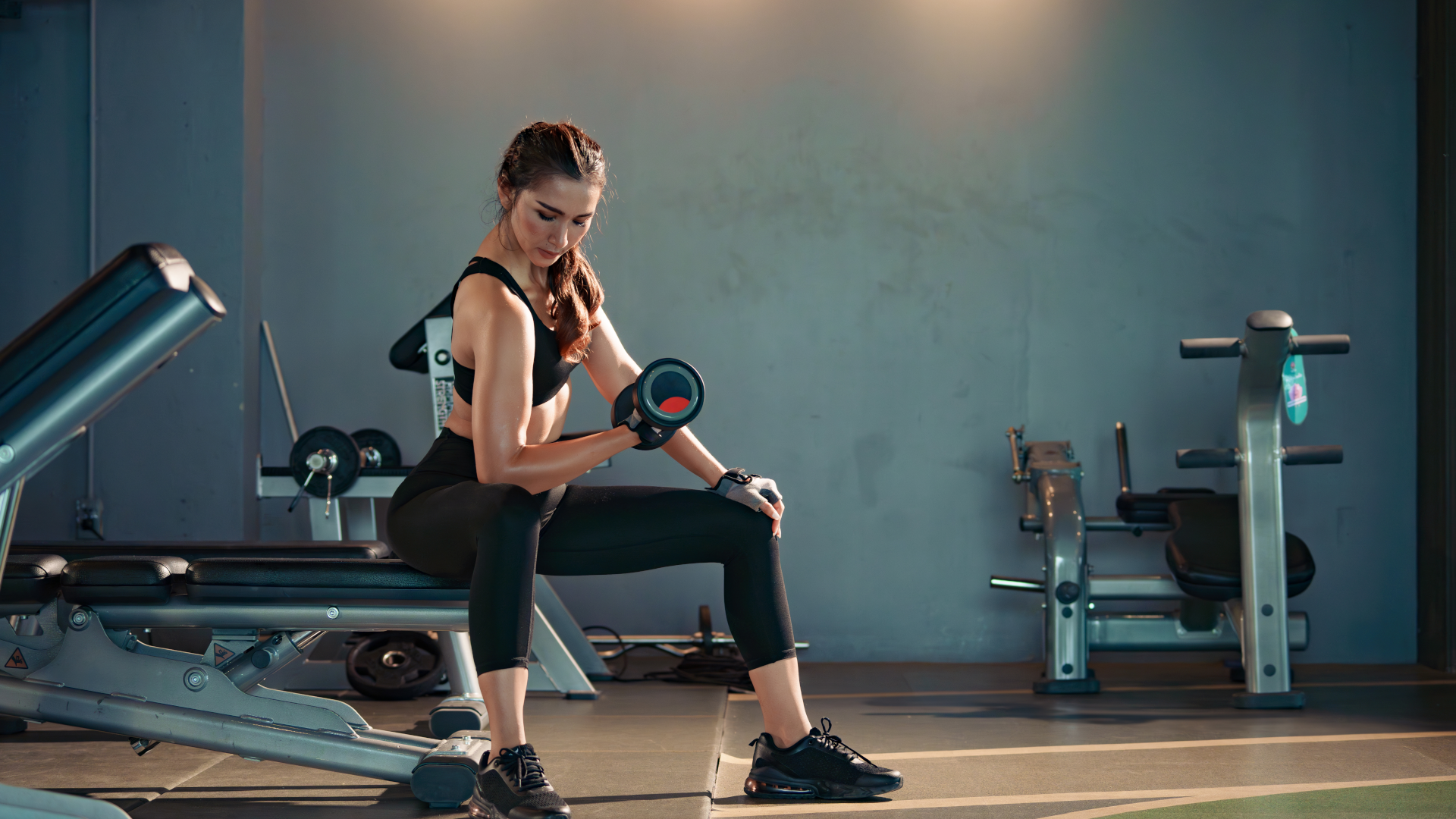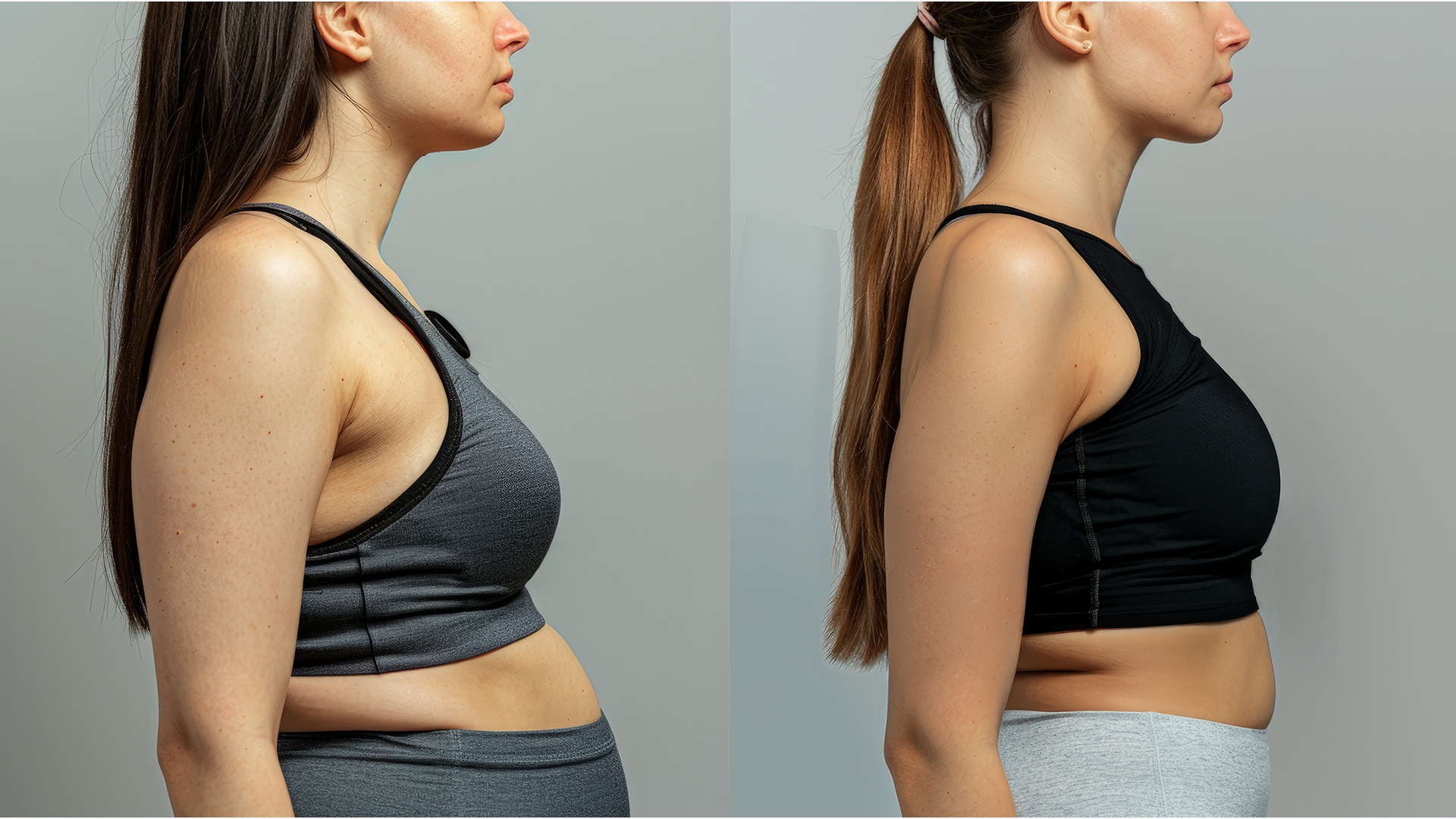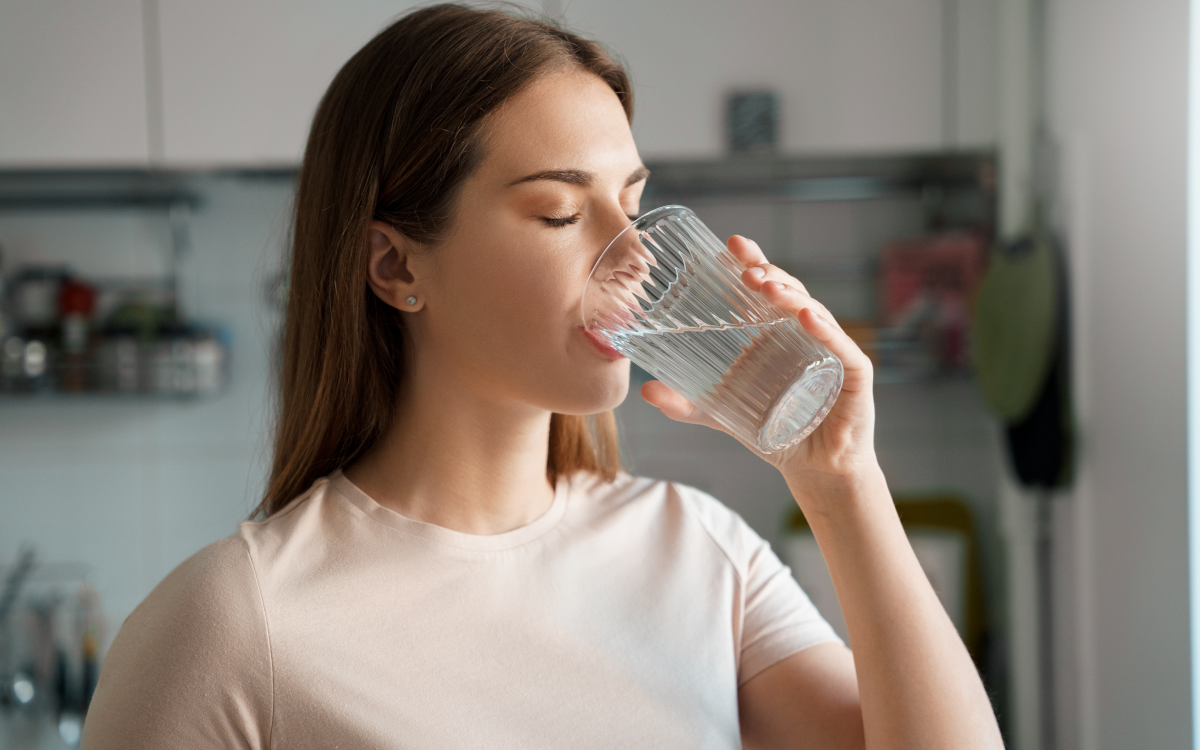You've probably heard that a combination of fat-burning workouts, a balanced diet, and a calorie deficit are the winning combination for losing weight.
But what exactly are the best exercises to burn fat and lose weight? Are there certain workouts that help burn fat more than others?
Here, we're going to cover all the ways you can effectively lose fat and burn calories with the best fat-burning workouts out there.
So let's get to it.
First of all, we want to say that having body fat isn't a bad thing. In fact, having body fat is biologically necessary—we actually need body fat for energy and a ton of other reasons, like absorbing vitamins, insulating the body, protecting vital organs, regulating hormones, and other important reasons.
The body fat we want to target is the excess body fat.
Why is losing body fat important?
Losing body fat can reduce the risk of chronic diseases, improve overall health markers, and boost body confidence. But it also has other impressive effects too…
Let's get straight into the science of why losing fat is not only great for your waistline.
Health benefits of losing body fat
Scientific research has consistently demonstrated the significant health benefits associated with reducing body fat.
General health
Did you know? Obesity is known to contribute to a range of chronic health conditions, including cardiovascular disease, Type 2 diabetes, hypertension, and certain types of cancer.
And by obesity we mean having a BMI of over 30. Excess body fat is associated with inflammation and insulin resistance, which are underlying factors in the development of these diseases.
But it isn't just people who are in the obese category who can benefit from a reduction of body weight.
According to a study published in the American Journal of Clinical Nutrition, even a small reduction in body fat percentage can help improve overall health markers, such as blood pressure, cholesterol levels, and insulin sensitivity. And you don't have to be obese to reap the rewards of these health benefits.
By reducing fat, you can improve metabolic health and lower the risk of these conditions while promoting optimal organ function. Bonus.
Aesthetics
Beyond the health benefits, losing body fat can have a transformative effect on our physical appearance and body confidence.
Getting rid of excess fat helps reveal your natural contours and a more toned physique. It's a huge confidence boost and can help your self-esteem as you can fit into more styles of clothes and love what you see in the mirror.
And with a better body image comes embracing your own skin—a powerful motivator to strive towards achieving a healthier you.
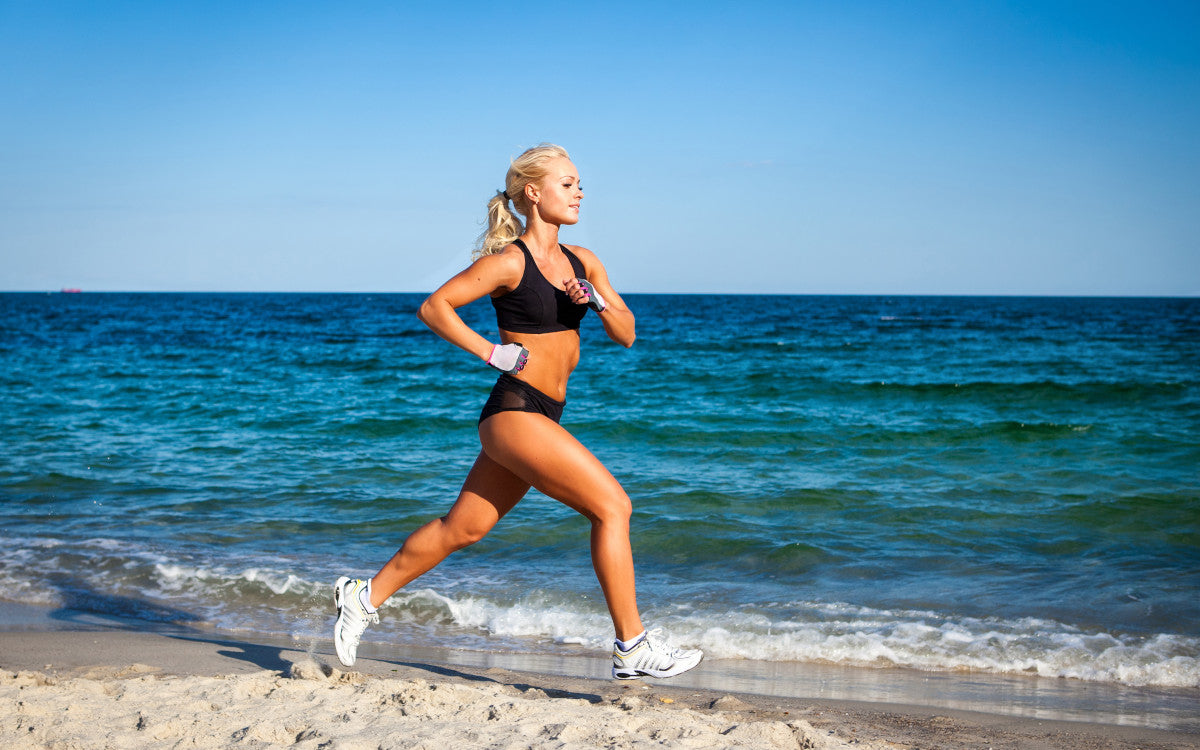
Is exercise the most important thing when it comes to fat loss?
When it comes to fat loss, exercise is an important factor—but not the most important one.
Naturally, there are plenty of sneaky ways to burn fat throughout the day, but a combination of exercise, diet, and calorie balance is your best bet for burning fat.
While exercise helps in burning calories and contributes to overall fat loss, the diet choices you make and your caloric intake also have an effect on weight management.
The main thing to remember and concentrate on is to create a calorie deficit where you consume fewer calories than you burn.
So, following a balanced diet and practising calorie control alongside exercise is essential for successful and sustainable fat loss.
How important is diet in fat burning?
Diet plays a really important role in fat burning. Here are some foods to include in your diet to encourage fat burn.
Fatty fish
Fish like salmon, mackerel, and sardines are rich in omega-3 fatty acids and make a great source of protein which helps to preserve muscle mass, reduce inflammation, and promote fat burning.
Nuts and seeds
These are nutrient-dense foods that provide healthy fats, fibre, and protein. They help promote satiety and reduce your appetite.
Whole grains
Foods like brown rice, quinoa, and oats are complex carbohydrates that are rich in fibre. They help maintain energy levels and stabilise blood sugar levels which helps fat-burning workouts tackle those calories more effectively.
Chili peppers
In chilli peppers is a compound called capsaicin, which kick starts metabolism and in turn, fat burning.
So does healthy eating help you lose weight?
Yes, it does.
How does calorie intake affect fat burning?
For weight loss, you need to understand the relationship between calorie intake and fat burning.
As we mentioned, by creating a calorie deficit, your body is kickstarted into using stored fat as its energy source.
The result? Fat burning and weight loss.
Calorie intake
Make sure your calorie intake is within a healthy range, typically around 500 to 1000 calories below your maintenance level—doing so will ensure the kind of fat burning that you can sustain.
Don't know how many calories you should be eating? On average, it's 2000 calories a day for women and 2500 for men.
TOP TIP: Use this calorie calculator to find out exactly how many you should be consuming to maintain your weight, then figure out a safe calorie deficit.
Metabolism
Reducing calorie intake can also help regulate your metabolism. A healthy, normal metabolic rate means if you're doing the right things, you should lose fat and weight.
Did you know? If you're eating too few calories, this can actually slow down your metabolism.
Likewise, eating too many calories may result in the body storing excess energy as fat. Over time this can be associated with a lower metabolic rate.
Is there such a thing as fat-burning exercises?
Yes, there are exercises that can help with fat burning. They are usually high-intensity workouts that increase heart rate and calorie expenditure. But how exactly do they burn fat?
Fat-burning workouts increase energy expenditure, which leads to a calorie deficit and makes the body burn stored fat as fuel.
But how else do they work?
Increased calorie burn
When you engage in high-intensity exercises like HIIT or cardiovascular exercises, your body's energy demands increase—leading to a higher calorie burn.
This is because the body is working hard to repair the muscles and replenish all the energy that has been lost during the workout.
Improved metabolism
Exercise, particularly resistance training or weightlifting, helps build lean muscle mass.
Muscle tissue has a higher metabolic rate than fat tissue, meaning that having more muscle can increase your resting metabolic rate, allowing you to burn more calories throughout the day.
Fat oxidation
During aerobic exercises, such as running, cycling, or swimming—your body primarily relies on stored carbohydrates (glycogen) for energy in the initial stages.
But, as the workout increases, your body begins to tap into its fat stores and uses them as energy instead.
It's worth noting that losing fat is influenced by many factors like diet, genetics and overall lifestyle. Exercise alone isn't a guarantee for significant weight loss.
A combination of regular exercise, a nutritious diet, and a healthy lifestyle are key for sustainable fat burning.
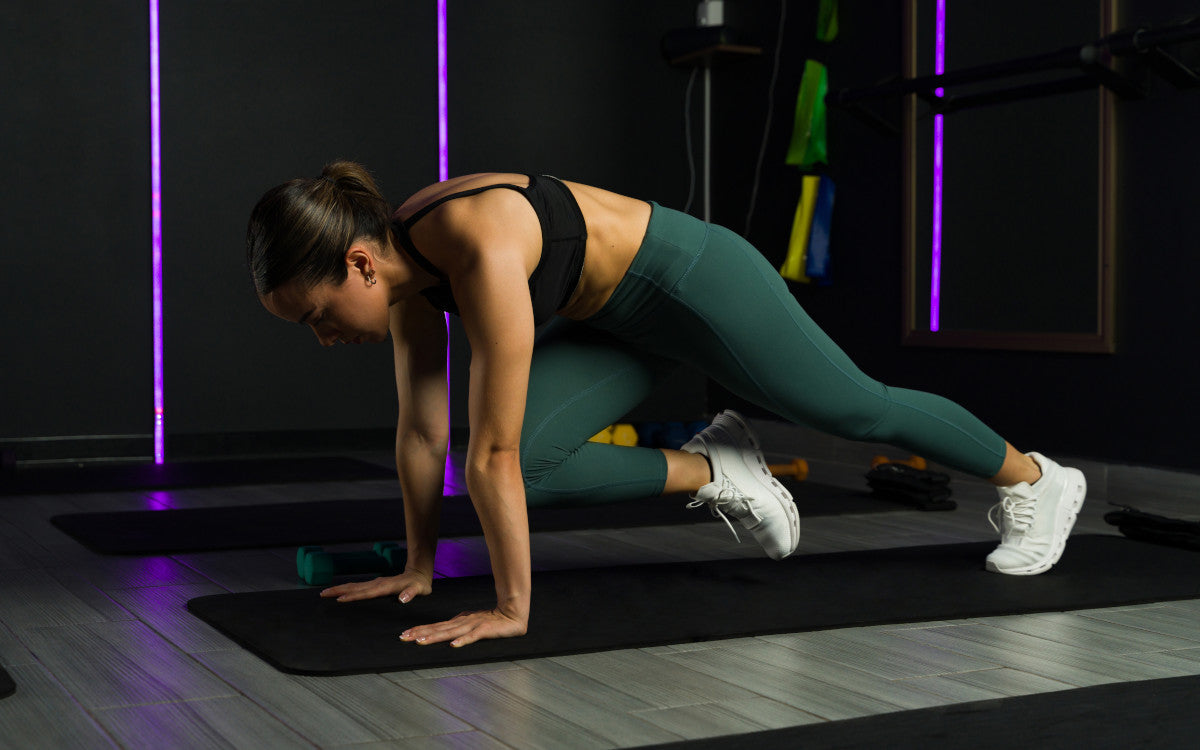
Which exercises target fat burning?
High-intensity interval training (HIIT)
HIIT workouts involve short bursts of intense exercise followed by short rest periods. It's the go-to type of exercise for those who want to improve their cardiovascular fitness and burn fat.
Cardiovascular exercises
Activities like running, cycling, swimming, and aerobics can increase heart rate and help burn calories.
When you perform these exercises at moderate-to-high intensity, they help to burn fat as the body needs to generate more energy.
First, it uses stored carbohydrates in the form of glycogen then it uses body fat as energy.
Resistance training
Strength training exercises, such as lifting weights or using resistance bands, can also contribute to fat burning.
Did you know? Building lean muscle mass through resistance training can help increase metabolism and burn calories at rest.
What exercises burn the most fat?
In order (*drum roll, please*)…these are your best options. For optimum results, do a mixture of them as workouts.
High-Intensity Interval Training (HIIT)
Research has shown that HIIT workouts are very effective in burning calories and increasing metabolism, and this continues after the workout has ended. Did you know that HIIT workouts burn more calories than moderate intensity workouts?
Examples: burpees, mountain climbers, squat jumps and sprinting intervals.
Strength Training
This type of training can efficiently burn calories during your workout. It's important to retain muscle mass and keep up your metabolic rate whilst trying to lose weight.
Examples: Squats, deadlifts, lunges, bench press, and pull-ups.
Cardiovascular exercises
Cardiovascular exercises are exercises that increase your rate of breathing and pulse. The result is an improvement in your cardiovascular system's health that gets you into fat-burning mode.
Of course, the intensity of your exercise will get you into the fat-burning zone. You can notch up the intensity incrementally as your fitness levels increase in a consistent exercise program.
Here are some examples for you to consider: Running, cycling, and swimming.
What exercise plan can I follow?
Let's divide these weekly workouts into the gym and at home—because it's not always possible to find the time to get to the gym, is it?
Gym workout plan
TOP TIP: Adjust the weights and intensity according to your fitness level.
Day 1: Full-Body Resistance Training + Cardio
Warm-up: 5 to 10 minutes of dynamic stretches or light cardio.
Strength Training:
Squats: 3 sets of 10-12 reps.
Deadlifts: 3 sets of 8-10 reps.
Chest Press: 3 sets of 10-12 reps.
Bent-Over Rows: 3 sets of 10-12 reps.
Shoulder Press: 3 sets of 10-12 reps.
Bicep Curls: 3 sets of 10-12 reps.
Tricep Dips: 3 sets of 10-12 reps.
Cardio:
Treadmill or Elliptical: 20 minutes of high-intensity intervals (e.g. One-minute sprint, One-minute moderate pace).
Cool-down: 5-10 minutes of static stretches.
Day 2: HIIT Workout
Warm-up: 5-10 minutes of dynamic stretches or light cardio.
HIIT Circuit:
Jumping Jacks: 30 seconds.
Mountain Climbers: 30 seconds.
Burpees: 30 seconds.
High Knees: 30 seconds.
Rest: 30-60 seconds.
Repeat the circuit for a total of 3-4 rounds.
Cardio:
Stair Climber or Stationary Bike: 15-20 minutes of moderate intensity.
Cool-down: 5-10 minutes of static stretches.
Day 3: Light Cardio + Core Workout
Warm-up: 5-10 minutes of dynamic stretches or light cardio.
Cardio:
Stationary Bike or Rowing Machine: 30 minutes of steady-state cardio at a moderate pace.
Core Workout:
Plank: 3 sets of 30-60 seconds.
Russian Twists: 3 sets of 10-12 reps per side.
Bicycle Crunches: 3 sets of 10-12 reps per side.
Leg Raises: 3 sets of 10-12 reps.
Cool-down: 5-10 minutes of static stretches.
Home Workout Plan:
Day 1: HIIT Workout
Warm-up: 5-10 minutes of dynamic stretches or light cardio (e.g., jogging in place).
HIIT Circuit:
Jumping Jacks: 30 seconds.
High Knees: 30 seconds.
Mountain Climbers: 30 seconds.
Burpees: 30 seconds.
Rest: 30-60 seconds.
Repeat the circuit for a total of 3-4 rounds.
Cardio:
Jumping Rope: 10 minutes of intervals (e.g., 30 seconds fast, 30 seconds rest).
Cool-down: 5-10 minutes of static stretches.
Day 2: Strength Training + Cardio
Warm-up: 5-10 minutes of dynamic stretches or light cardio (e.g., marching in place).
Strength Training (using bodyweight or resistance bands):
Squats: 3 sets of 10-12 reps.
Push-ups: 3 sets of 10-12 reps.
Lunges: 3 sets of 10-12 reps per side.
Superman: 3 sets of 10-12 reps.
Glute Bridges: 3 sets of 10-12 reps.
Tricep Dips: 3 sets of 10-12 reps.
Cardio:
Jumping Jacks: 3 sets of 30 seconds with 15 seconds rest in between.
High Knees: 3 sets of 30 seconds with 15 seconds rest in between.
Cool-down: 5-10 minutes of static stretches.
Day 3: Cardio + Core Workout
Warm-up: 5-10 minutes of dynamic stretches or light cardio (e.g., jog in place with high knees).
Cardio:
Dancing, jumping jacks, or burpees: 30 minutes of continuous movement at a moderate pace.
Core Workout:
Plank: 3 sets of 30-60 seconds.
Russian Twists: 3 sets of 10-12 reps per side.
Bicycle Crunches: 3 sets of 10-12 reps per side.
Leg Raises: 3 sets of 10-12 reps.
Cool-down: 5-10 minutes of static stretches.
Does other exercise help?
Yes, but the exercises above are the best for fat burning. However, flexibility training with yoga, pilates or stretching helps with overall mobility, reduces muscle imbalances, and enhances your performance during other workouts—making for a well-rounded fitness routine.
You can also look into mind-body exercises like yoga, tai chi, and meditation. These can help with stress levels and assist overall wellbeing, often overlooked approaches that may help with stress-related cravings or emotional eating.

How can I start burning fat now?
Before you launch into a new fitness routine, why not get a helping hand with PhenQ dietary supplements?
These innovative supplements are a super simple way to burn stored fat, kickstart your metabolism, and reduce your appetite. Give them a try.
